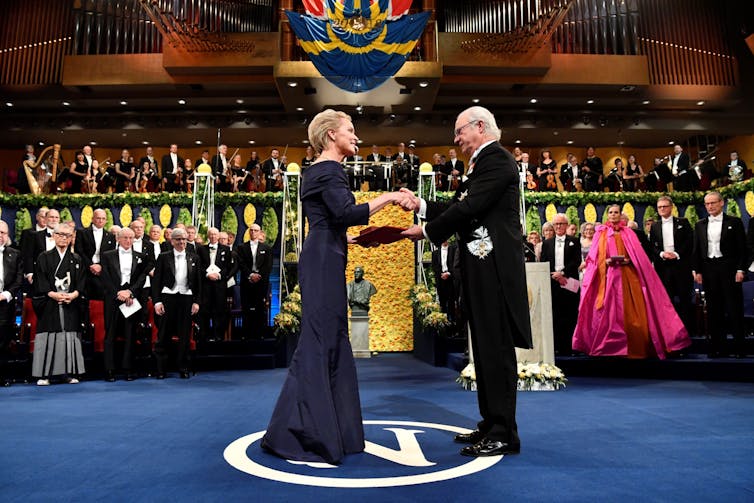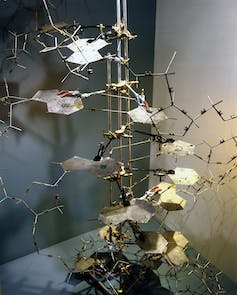I’ve been primarily an experimental chemist – the kind of person who goes into the laboratory and mixes and stirs chemicals – since the beginning of my career in 1965. Today, and for the past 15 years, I’m a full-time historian of chemistry.
Every October, when the announcements are made of that year’s Nobel laureates, I examine the results as a chemist. And all too often, I share the same response as many of my fellow chemists: “Who are they? And what did they do?”
One reason for that bewilderment – and disappointment – is that in many recent years, none of my “favorites” or those of my fellow chemists will travel to Stockholm. I am not suggesting that these Nobel laureates are undeserving – quite the opposite. Rather, I am questioning whether some of these awards belong within the discipline of chemistry.
Consider some recent Nobel Prizes. In 2020, Emmanuelle Charpentier and Jennifer A. Doudna received the Nobel Prize “for the development of a method for genome editing.” In 2018, Frances H. Arnold received the Nobel Prize “for the directed evolution of enzymes,” which she shared with George P. Smith and Sir Gregory P. Winter “for the phage display of peptides and antibodies.” In 2015, Tomas Lindahl, Paul Modrich and Aziz Sancar received the Nobel Prize “for mechanistic studies of DNA repair.”
All of them received Nobel Prizes in chemistry – not the Nobel Prize in physiology or medicine, even though these achievements seem very clearly situated within the disciplines of medicine and the life sciences. There are many other similar examples.

2018 co-laureate Frances Arnold receives her Nobel Prize in chemistry from King Carl XVI Gustaf of Sweden.
Henrik Montgomery/AFP via Getty Images
These recent mismatches are even clearer when you look further back in time. Consider the 1962 Nobel Prize awarded to Francis Crick, James Watson and Maurice Wilkins “for their discoveries concerning the molecular structure of nucleic acids and its significance for information transfer in living material.” DNA, of course, is the most famous nucleic acid, and these three scientists were honored for deciphering how its atoms are bonded together and arranged in their three-dimensional double-helix shape.
While the “structure of DNA” most certainly is an achievement in chemistry, the Nobel Assembly at the Karolinska Institute in Stockholm awarded the Nobel Prize in physiology or medicine to Watson, Crick and Wilkins. Clearly, their Nobel achievements have had great consequences in the life sciences, genetics and medicine. Thus awarding them the Nobel Prize for physiology or medicine is quite appropriate.

A model of a DNA molecule using some of Watson and Crick’s original metal plates.
Science & Society Picture Library via Getty Images
But note the disconnect. The Nobel Prizes in chemistry in 2020, 2018 and 2015 are more…



